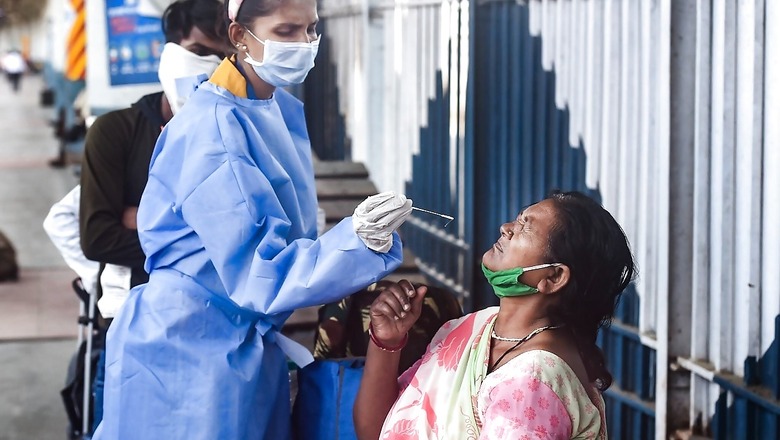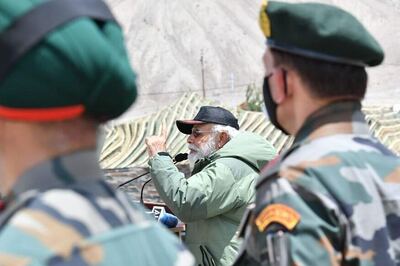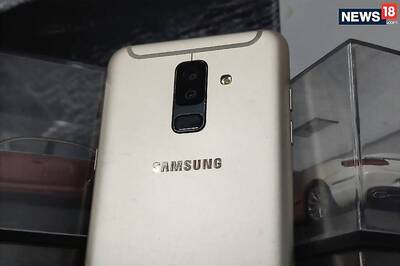
views
Compared to the 11,000-plus daily cases in April, Mumbai on Tuesday reported 2,554 cases, the lowest single-day tally since mid-March. Additional BMC commissioner Suresh Kakani talks about how Mumbai managed to turn the corner.
Mumbai has followed the basic principle of tracking, testing and treating COVID patients. We have opened up kiosks at several places that witness heavy footfall, like shopping malls, sabzi mandi, fish market, for swab collection. In case of testing, our strategy is two-fold. For the floating population—for instance, people who are just going to the market to buy something)—we are using Rapid Antigen Test or RAT, where the results are known in 15-30 minutes and we can isolate the person, if needed. For the stationary population, like shopkeepers and food vendors, we use RT-PCR tests. In case the person tests positive, we isolate them the next day and shift them to a quarantine facility, if needed.
To support this, we have additional quarantine facilities ready. Between October and February, when the cases of COVID-19 went down in Mumbai; we were advised that these temporary facilities should be dismantled. But we decided to continue with them till 31 March, even if that we had to spend some money to operate and maintain them. During the second wave, this helped us in a big way.
In the meantime, we also augmented our oxygen supply system. Of the 28,000 beds we have, around 12,000-13,000 beds are with oxygen supply. In the second wave of the pandemic, the requirement of oxygen has increased manifold. But, our infrastructure was ready and, therefore, we could easily admit patients. In April, our peak was 11,000 patients, almost four times the peak we saw during the first wave.
Initially, we depended on regular cylinders for the oxygen supply which had to be refilled every day and it was a tedious process. We realized during the first wave itself that if we rely heavily on these cylinders, it won’t work out in the long run. So, we shifted to jumbo cylinders with 10 times more capacity than the regular cylinders. We also escalated our intervention and set up a liquid medical oxygen tank with a capacity of 13,000 kilo-litre. Whichever facility had more beds, two jumbo cylinders were deployed—enough to operate all the beds for 2-3 days. Although our utilization was 10-20 per cent then, it worked in our favour later. Now, practically every hospital has shifted from the refilling mode to the storage-supply mode.
However, we didn’t scrap the old cylinders and kept them in reserve—in case, the oxygen supply goes down, we can immediately shift to them, and these can last for 1-2 days depending on the oxygen requirement of the patient. This helped us in checking the fatality rate.
This time, most COVID-19 patients in Mumbai stay in buildings. Therefore, we have deployed a strategy wherein we can ask them if they have access to an independent room and bathroom, then they can be isolated at home, otherwise they can be shifted to public facilities or any other private facility.
The routine system that we followed during the first wave has been continued—door-to-door surveys, setting up camps, taking private practitioners on board for identifying influenza-like symptoms or COVID-like symptoms in patients. All these factors have worked in our favour.
But we have not let our guard down. We are maintaining the same level of alertness so that there should not be any problem anywhere. Our systems are standardized. The decentralized ward war rooms (24)—each managing a limited geographical area—are contacting the patients, isolating them, identifying the high-risk contacts, providing testing facilities, shifting the patients, and coordinating house visits. We have also provided enough number of ambulances to each ward war room so that the patient can be shifted immediately.
We have made it mandatory for labs to share the list of COVID positive patients with us so that before the patient gets to know they are positive, our war room contacts them and informs them and also assesses their condition. If they don’t have equipment to record temperature, oxygen levels, then our field team visits them, records the parameters and assesses the patient, if they are fit for home isolation or need to be shifted to a facility.
We anticipated a shortage in medicines like Remdesivir and floated a tender to procure 2 lakh vials of Remdesivir. Therefore, no public hospital in Mumbai has a shortage of Remdesivir.
In all major private hospitals, 80 per cent beds are reserved for COVID patients. That mandate has been given to us by the government and we are enforcing it. The private sector has also supported us in fighting the second wave.
In my opinion, beyond permanent hospitals, makeshift facilities are really important in terms of keeping us prepared for the next surge. It has worked for Mumbai. Other big cities can also have similar set-ups in strategic locations.
(As told to News18.com)
Read all the Latest News, Breaking News and Coronavirus News here. Follow us on Facebook, Twitter and Telegram.



















Comments
0 comment